What Does an Air Pump Do in Aquarium
It seems that an air pump is a key piece of equipment that is essential to every fish tank. Some fish and crabs can live in deep water but need an air pump to ensure they don’t die at night due to a lack of oxygen. In this article, we will talk about the air pump in a fish tank and which ornamental fish are very dependent on it to survive, how to calculate the right amount of oxygen to choose the right pump, the considerations of using an air pump, and so on.
We hope to open a quick valve for you in your fish-keeping journey.
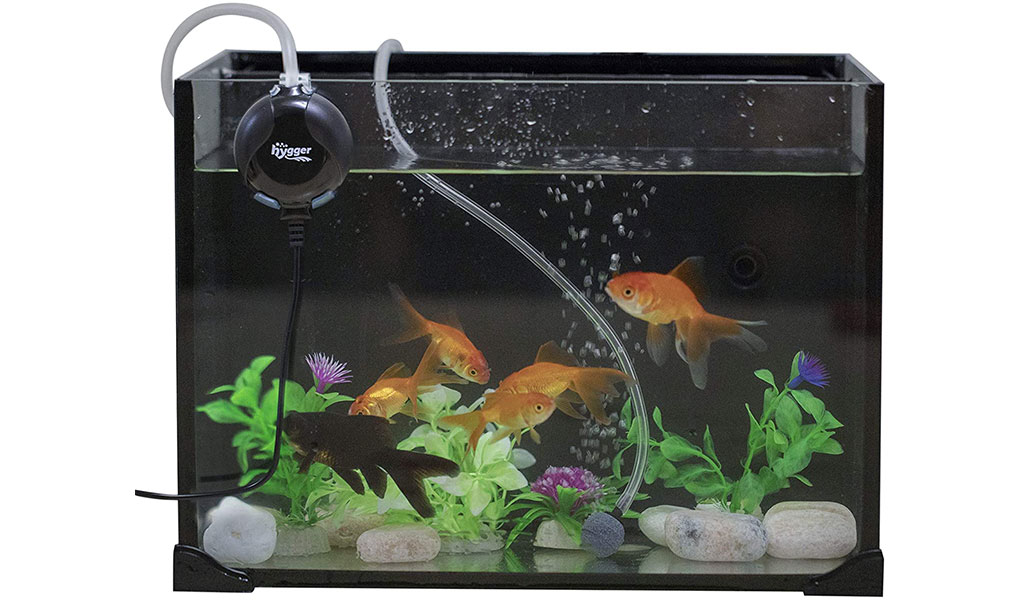
What is the role of an air pump in a fish tank
What is an air pump
The air pump is a mechanical device that uses electricity to circulate water. It is powered by either a wall outlet or battery power. The air that the pump produces is then pushed through airline tubing to fish tank decorations. The air bubbles cause agitation and help increase gaseous exchange. They also drive away potentially toxic carbon dioxide, a by-product of respiring creatures and aquatic plants.
Aquarium device to increase oxygen
The function of an aquarium air pump is to provide more oxygen to the water. The pump pulls in atmospheric air through airline tubing, passes it across an air stone, and releases it as bubbles into the aquarium water. These bubbles are then consumed by fish and other aquatic life, providing them with more oxygen. However, many aquarium owners don’t understand the purpose of this device, so we’ll look at what it does before you buy one.
An air pump is a device that helps to increase the oxygen in a fish tank. The airstone is connected to the air pump through tubes, and they create various bubbling effects. It works by increasing water agitation. Air pumps have multiple outputs, allowing you to control the amount of air that goes into the water. These air pumps can also be controlled individually.
Air pumps are an essential part of any aquarium, as they introduce more atmospheric oxygen into the water. For this reason, air pumps are among the best ways to keep a fish tank aerated. You do not need to use air pumps if your fish tank is small and doesn’t require a lot of water movement. But in larger tanks, you may want to consider installing a quiet air pump.
Other purposes of air pump
The air pump serves many purposes in an aquarium. It can provide oxygen and water circulation, operate filtration equipment, and even serve as decoration. However, there are some downsides to an air pump. It can be noisy, especially if it is located near a densely planted area. And some pumps are of low quality, so make sure you purchase a good one.
It’s best to get a large air pump that can run your filter and protein skimmer. If you’re planning to run multiple ornaments and an aquarium protein skimmer, be sure to purchase a pump with more than enough air pressure for the equipment. In addition to running your equipment, an air pump can work as decoration. Unlike a bubbler, an air pump doesn’t go into the fish tank. It’s attached to other aquarium objects, such as waterfalls or a filter.
Some aquariums require an air pump to maintain the proper level of oxygen in the water. A tank with a good circulation of water is not likely to need an air pump, but it may be necessary for the fish in the top layer. If you can keep the water temperature stable, you can eliminate the need for an air pump. In warm water aquariums, a fish tank air pump may be necessary to maintain proper levels of oxygen.
If you need to manually add oxygen, you can use a manual method. If you don’t have an air pump, you can scoop out some aquarium water, fill a clean container, and pour it back into the tank. This method is helpful when a power outage occurs. If you don’t have a power source, a rechargeable aquarium air pump may be the only option.
Air pump benefits for aquarium
There are many benefits of owning an air pump for your aquarium, and you may want to get one for your fish. You will find that the water quality of your aquarium will improve when you use an air pump, as the bubblers will ensure that the fish have oxygen at all times. The pump is also beneficial in helping keep the water clean because bacteria are essential for breaking down toxins in your tank. However, bacteria inadvertently consume oxygen as they break down these compounds. Therefore, dirty water requires more bacteria to break down these compounds, which will eat more oxygen. Bubblers prevent this from happening, and they ensure that your fish get a continuous supply of oxygen.
If you have a large aquarium, you may be interested in purchasing an air pump. A pump will increase the circulation of water. Using an air pump will prevent the fish from suffering symptoms of hypoxia due to chemical imbalances in their aquarium water. A pump will also help them avoid dehydration caused by a lack of oxygen. It is also important to remember that a fish with too little oxygen may not survive.
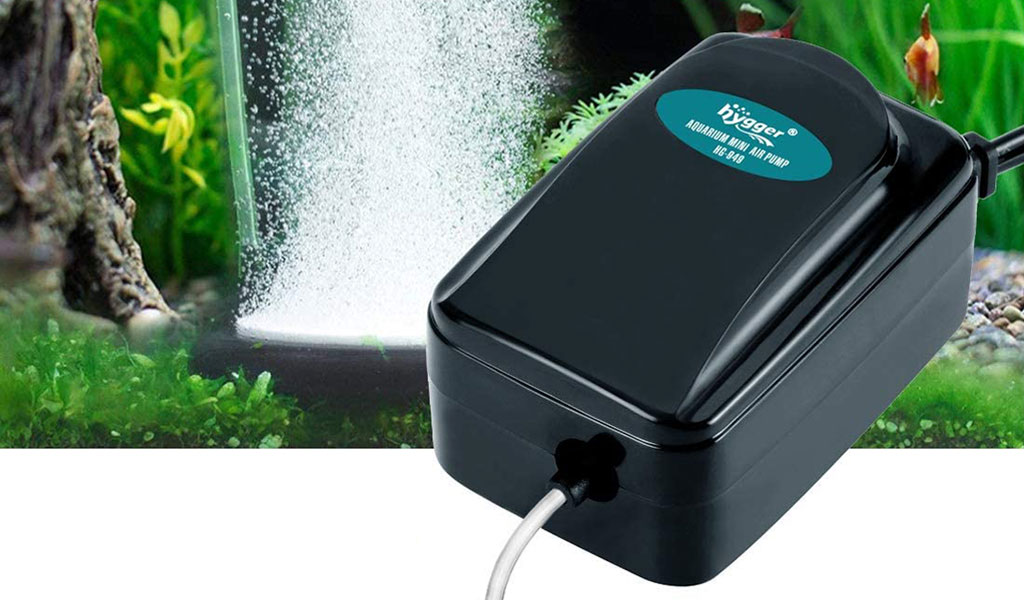
How to properly aerate a fish tank
If you’re wondering how to aerate a fish tank, keep reading! Goldfish live for two to five years and require a temperature range of 75°F to 80°F and a pH level of 5.5 to 7. A well-aerated tank is crucial to the health of your goldfish. You can tell if aeration is needed by looking for signs such as bottom-feeding or gasping fish.
Simple ways to aerate the fish tank
Aeration can be achieved by adding plants. Plants are a great way to increase the amount of oxygen in a fish tank, as they are an excellent source of oxygen. Plants also help to aerate a fish tank by converting carbon dioxide into oxygen. The more plants you add, the more oxygen the fish will absorb.
Fish tank aeration can be achieved by raising the pouring point of the water. A higher pouring point allows the air to reach the fish tank water at a deeper level. A plate at the bottom of the tank should be placed in the water to prevent debris and substrate from being stirred up. A high pouring point is important to maximize the aeration effect. A higher pouring point increases the flow of water and provides a more efficient water filtration system.
Basic methods of aeration
If you have a fish tank that lacks aeration, you should check the oxygen levels. If your fish are gasping and spending excessive amounts of time around the filter, you might need to add an aerating device. Generally, fish tank water is warmer and requires more oxygenation than cool water. Additionally, overcrowding and medicating your fish aquarium can decrease the oxygenation level.
While this may sound like a daunting task, there are many benefits to aquarium aeration. It ensures that the fish tank water is filled with sufficient dissolved oxygen, keeps bad odors at bay, and helps keep the fish healthy. Several techniques should be employed for the best results. A combination of several methods is best, but it’s best to seek professional help if you’re not sure which method is best for your particular tank.
One of the most basic methods of aeration is installing a hanging filter. The surface area of a fish tank is large, allowing carbon dioxide to escape and create oxygen. Standard fish tank filters break surface tension and release carbon dioxide. To provide oxygen, you can use air pumps and other devices. These devices can be used in conjunction with one another to create optimal airflow for your aquarium.
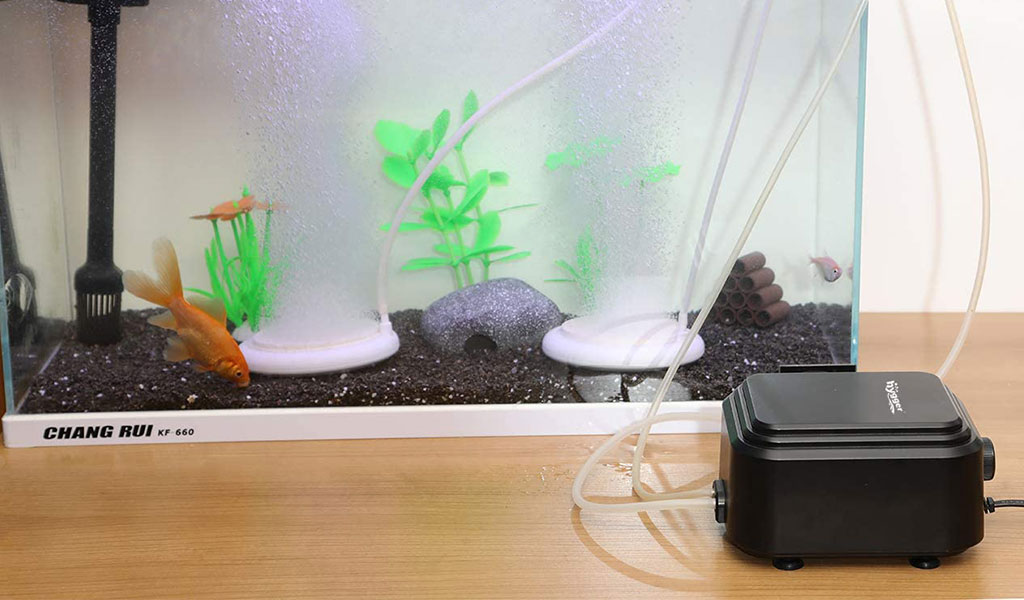
What fish should live with an air pump
Fish need an air pump
Not all fish need an air pump. The more surface area your tank has, the more oxygen it will retain. Fish with a smaller surface area is likely to need an air pump. Moreover, fancy goldfish are often kept in warmer water, which contains less oxygen than cooler water. An air pump can help prevent this. But it is not necessary for all fish. If you want to get a pump for your fish, make sure you choose a reputable brand and read reviews online to ensure that your purchase is worth it.
Molly fish are another great choice for your tank. These fish are easy to take care of and will feed on almost any food you provide. These fish are also good for beginners because they are low-maintenance and will grow into healthy, happy fish after you introduce them to their tank. You’ll have to be sure to give them some time to get used to the air pump in their tank.
When it comes to this topic – what fish should live with an air pump, Kuhli loaches swam into our views. Kuhli loaches are a typical oxygen-consuming type of tropical fish, without an adequate supply of oxygen they will soon feel full of stress and then the lack of oxygen will lead to their death. If you have Kuhli loaches and want them to lead a healthy and happy life, the best way is for you to add an oxygen pump to your aquarium.
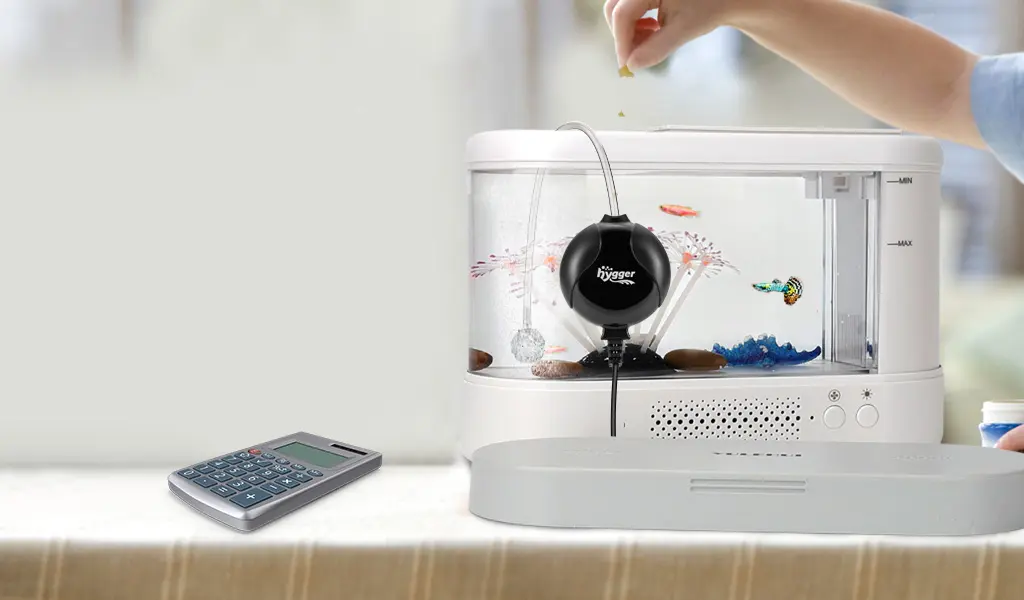
Calculate the correct amount of oxygen to choose the right air pump
The correct amount of oxygen needed by your aquarium depends on the number of fish you plan to keep. The more fish you have, the more oxygen your tank will require. Oxygen absorption is affected by the flow rate of water, so the faster the flow rate, the more oxygen your tank will require. Generally, you should buy a bigger air pump than you think you need because a larger one can accommodate more fish and provide you with more space.
Good surface agitation is essential for proper gas exchange in the tank. Having good surface agitation will help new oxygen dissolve into the water, and keep them breathing easily. If your fish are gasping at the surface, an air pump is an excellent way to solve this problem. A simple air stone can also increase the oxygen levels in the water.
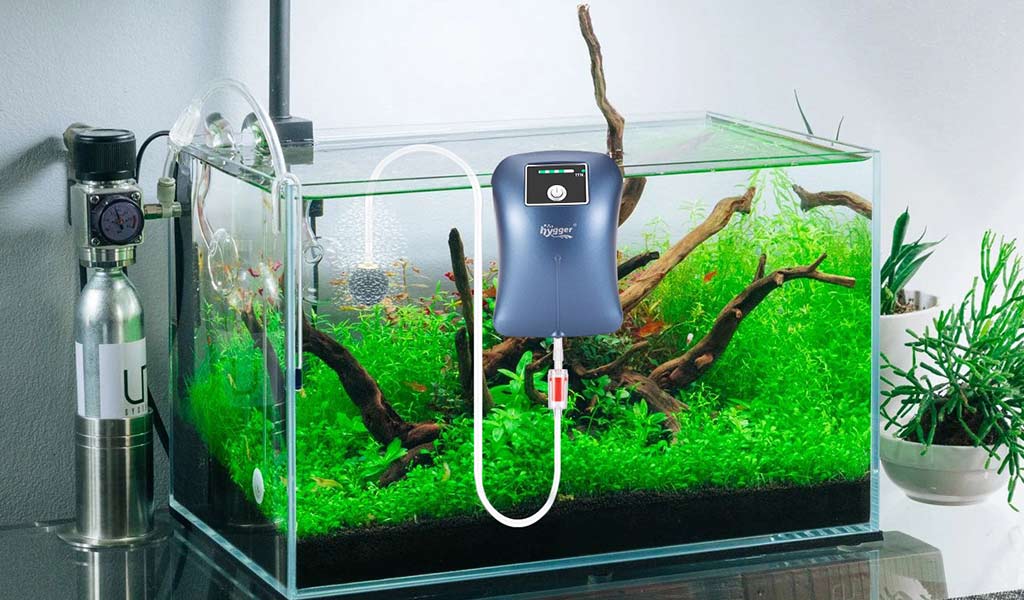
Some tips about using an air pump in a fish tank
If your fish tank is too small, consider moving them to a bigger tank to prevent health problems that result from a lack of oxygen. If you do not use a 4 watt air pump, try using a battery-operated model with an airstone.
Pay attention to the noise level
If you choose to use an air pump in a fish tank, you should pay attention to its noise level. If the pump makes a noise when working, it will disturb your fish. Make sure to select an air pump that is rated for a lower voltage. You should also clean the pump regularly. Lastly, make sure you regularly check the rated voltage of your pump before using it in the fish tank.
The sound from the air pump is the main cause of the noise level in your fish tank. Make sure to place the air pump in an appropriate cabinet where the sound is not excessively loud. Also, make sure to place it higher than the aquarium water level. Keeping the air pump on a solid surface will help you keep your fish tank clean and free from clogged decor and devices. You can also replace your old air pump with a quieter one.
Appropriate connect airstone
Once you have purchased an air pump, you should choose the appropriate connection. It should be connected to an airstone or sponge filter. If the airstone is connected to a sponge filter, you can connect the pump to the airstone with airline tubing. Make sure to install a check valve between the airstone and the pump to prevent the back siphoning of water. If you do not, the air pump could shut down and siphon water out of the tank.
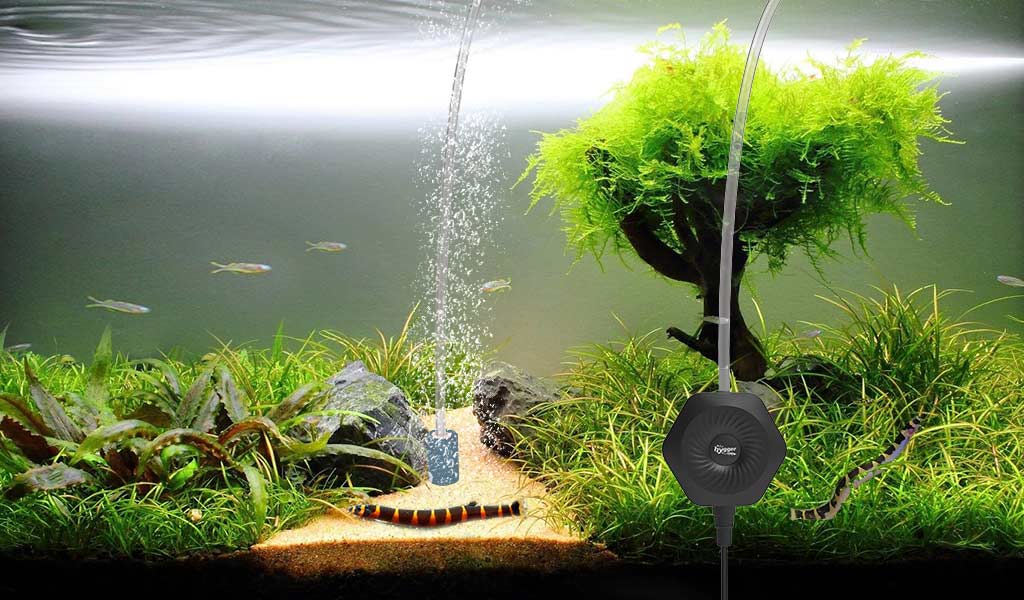
Is it okay to turn off the air pump at night in a fish tank?
You may be wondering, “Is it okay to turn off the air pump at night in a fish tank?” Hopefully, this part will help answer your question. Depending on the type of fish you have and the size of the tank, you may need to turn off the air pump for the entire night or a certain period each day. However, many fish owners still leave their air pumps on at night but they’re too noisy.
Regardless of the type of air pump you have, you should always be aware of the amount of CO2 in your tank. This is important for proper oxygenation. In addition, you should turn off the pump if you add CO2. Alternatively, you can use a timer to run the air pump in the evening and at night. Just remember to leave the light on in your fish tank. If you want your fish to have a freshwater environment, you can use an automatic bubbler attached to the air pump.
You can safely turn it off during the night by disconnecting the air pump from the filter unit. If you are concerned about the noise, you can turn it off for a few hours and leave the water untouched. Keep in mind that the air pump is needed to provide adequate dissolved oxygen for the fish to breathe. Remember that larger fish need more oxygen than small ones.
Reasons to turn off air pump at night
If you are concerned about the effects of the pump, you can always disconnect it from the aquarium filtration unit. However, it is not a good idea to disconnect them together. If you use a separate filter, it is okay to turn the air pump off for a couple of hours. If the water in your fish tank is sufficiently oxygenated, you can leave it off during the night. Turning off the air pump at night is to avoid overheating your tank.
Another reason why it’s okay to turn off the air pump at night is noise. Air pumps can produce a high-pitched sound, and the noise is distracting to your fish. Additionally, an air pump produces a loud humming sound, and that can be annoying for the fish. It’s better to make the pump noiseless by using a soft object to absorb the vibrations.
Make sure to check the water level in your aquarium before turning on the air pump. The amount of moisture in your tank will greatly affect the humidity level in the room.
Conclusion
In conclusion, compared to the whole aquarium, the oxygen pump is just a very insignificant part, but a very critical one. If you want to keep your tank healthy and orderly, especially for some high oxygen consumption fish that you may not know much about, then it is better to add an oxygen pump to your tank, it will save you a lot of valuable energy and time.
